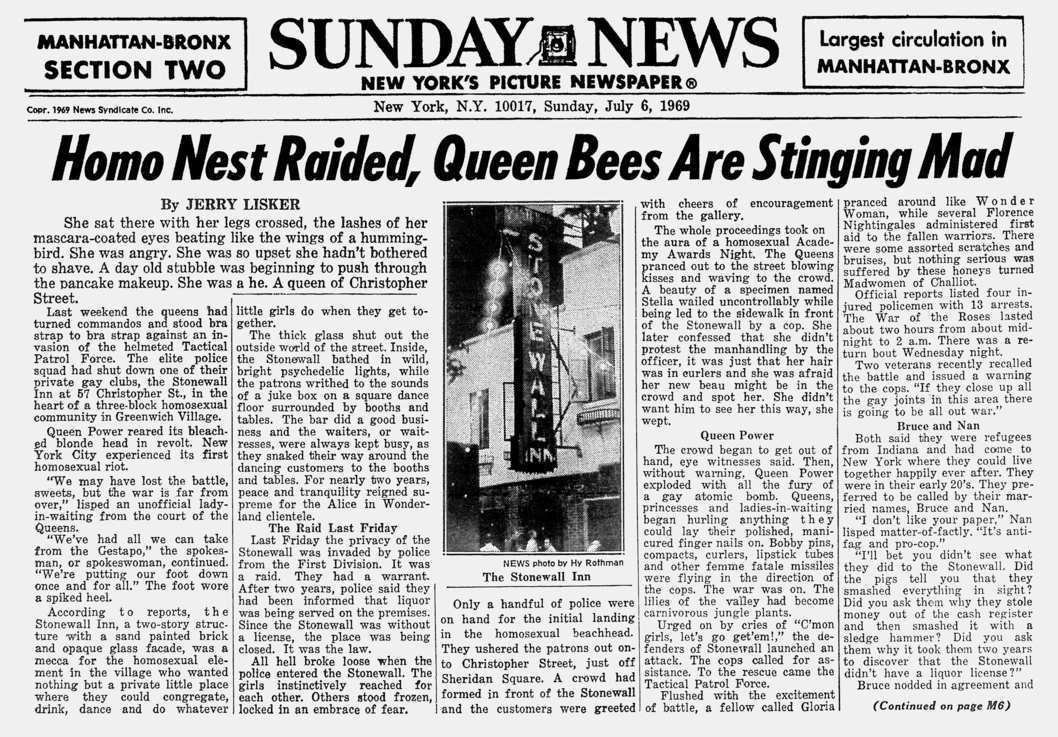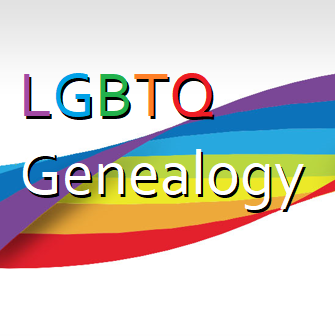Remembering Stonewall: 50 Years of LGBTQ Liberation
This month, on the 28th of June, we mark the 50th anniversary of the Stonewall Riots in Greenwich Village, New York. Stonewall was the watershed event igniting the modern gay rights movement. Over the past five decades, our society has made significant strides in accepting the LGBTQ community, yet there remains much work to be done globally.
In a previous post, I explored the historical documentation of LGBTQ experiences in newspapers, illustrating the challenges faced by the community. Here, we delve into another headline from the New York Daily News, written by Jerry Lisker in a derogatory tone: “HOMO NEST RAIDED – QUEEN BEES ARE STINGING MAD:”
“She sat there with her legs crossed, the lashes of her mascara-coated eyes beating like the wings of a hummingbird. She was angry. She was so upset she hadn’t bothered to shave. A day old stubble was beginning to push through the pancake makeup. She was a he. A queen of Christopher Street.
Last weekend the queens had turned commandos and stood bra strap to bra strap against an invasion of the helmeted Tactical Patrol Force. The elite police squad had shut down one of their private gay clubs, the Stonewall Inn at 57 Christopher St., in the heart of a three-block homosexual community in Greenwich Village. Queen Power reared its bleached blonde head in revolt. New York City experienced its first homosexual riot. (Emphasis added) “We may have lost the battle, sweets, but the war is far from over,” lisped an unofficial lady-in-waiting from the court of the Queens.
“We’ve had all we can take from the Gestapo,” the spokesman, or spokeswoman, continued. “We’re putting our foot down once and for all.” The foot wore a spiked heel. According to reports, the Stonewall Inn, a two-story structure with a sand painted brick and opaque glass facade, was a mecca for the homosexual element in the village who wanted nothing but a private little place where they could congregate, drink, dance and do whatever little girls do when they get together.”
The piece links the establishment to the Mafia, a common pretext for raiding gay clubs during that era.
The late 1960s were marked by protests in the Civil Rights Movement and the anti-Vietnam War movement, fostering an environment ripe for civil disobedience. Just six days after the death of Judy Garland, a revered icon in the drag queen community, the resilient drag queens of Greenwich Village took a stand. No longer willing to endure privacy violations in their grief, they fought back.
The tension between the New York City police and the LGBTQ community erupted into more protests the next evening, and again several nights later. Within weeks, Village residents quickly organized into activist groups to concentrate efforts on establishing places for queer folk to be open about their sexual orientation without fear of persecution.
A year later, on June 28, 1970, the first gay pride marches were organized by the Gay Liberation Front in New York, Los Angeles, San Francisco, and Chicago, commemorating the Stonewall Riots. This pivotal moment marked the birth of LGBTQ identity as a cohesive community. It spurred the establishment of newspapers, magazines, health clinics, churches, and specialized businesses. Today, annual Gay Pride events worldwide in late June honor the Stonewall riots, celebrating progress while acknowledging the ongoing fight for liberation.
As we commemorate this historic milestone, let us remain committed to preserving the hard-fought freedoms and continue the ongoing global efforts for LGBTQ liberation.





